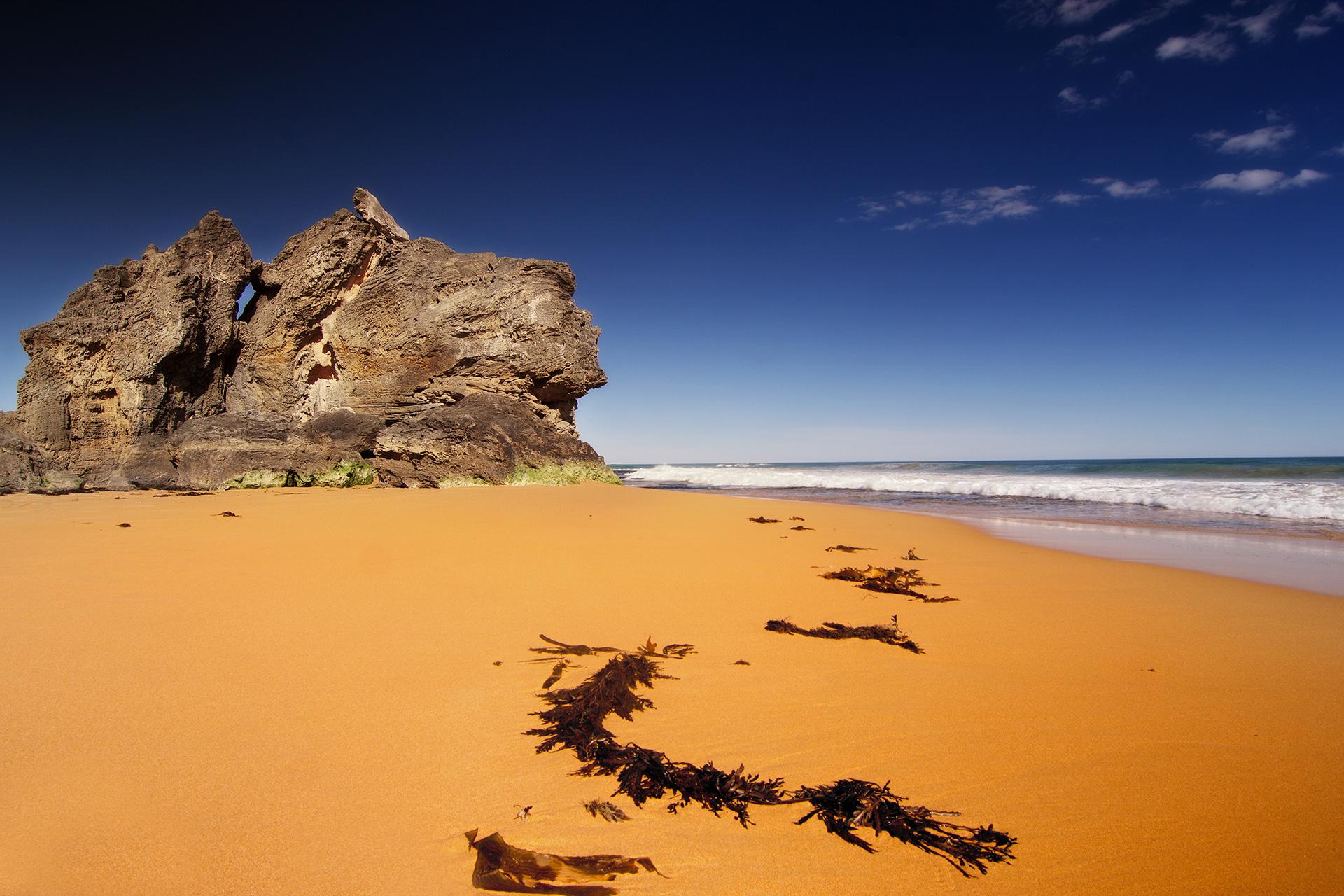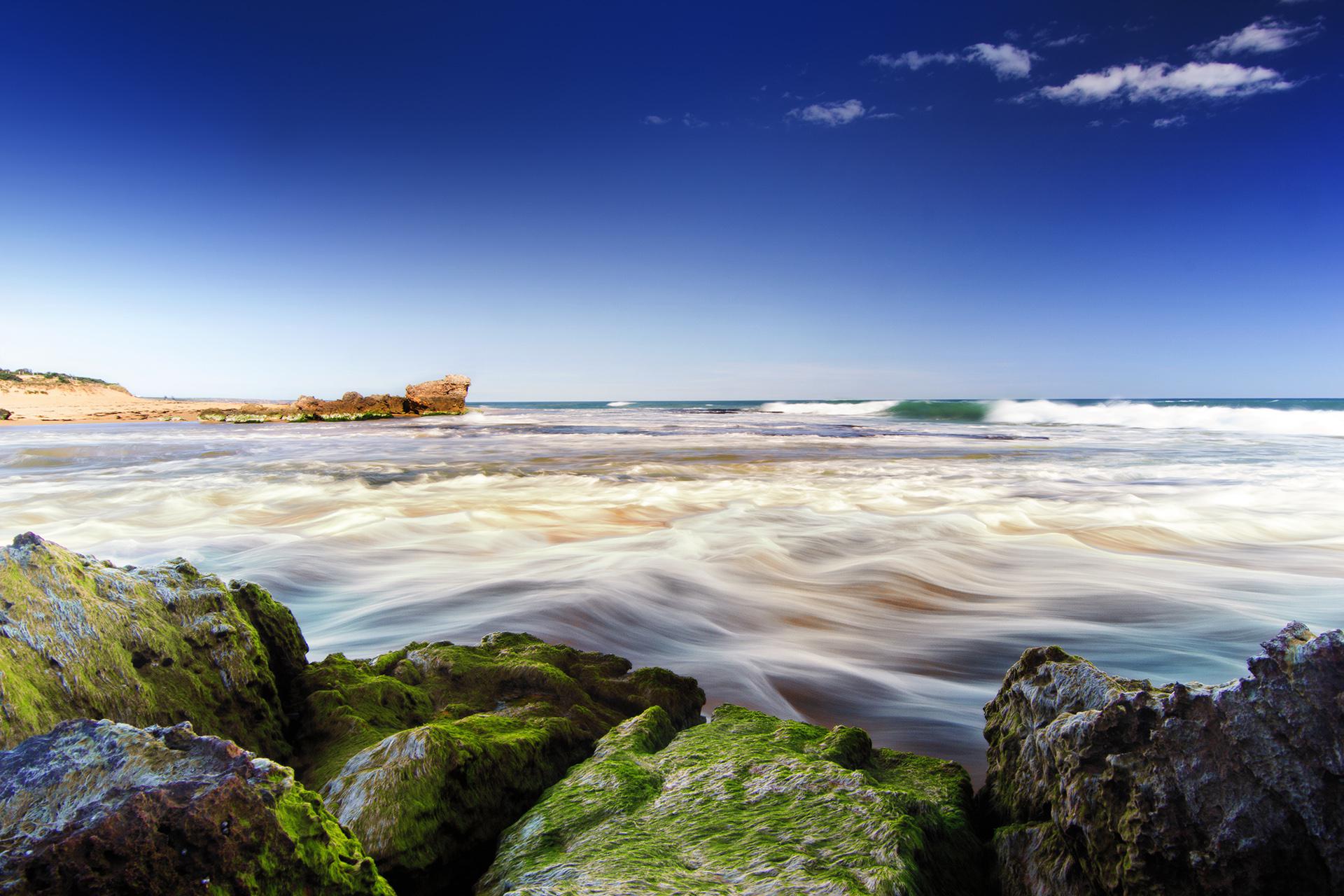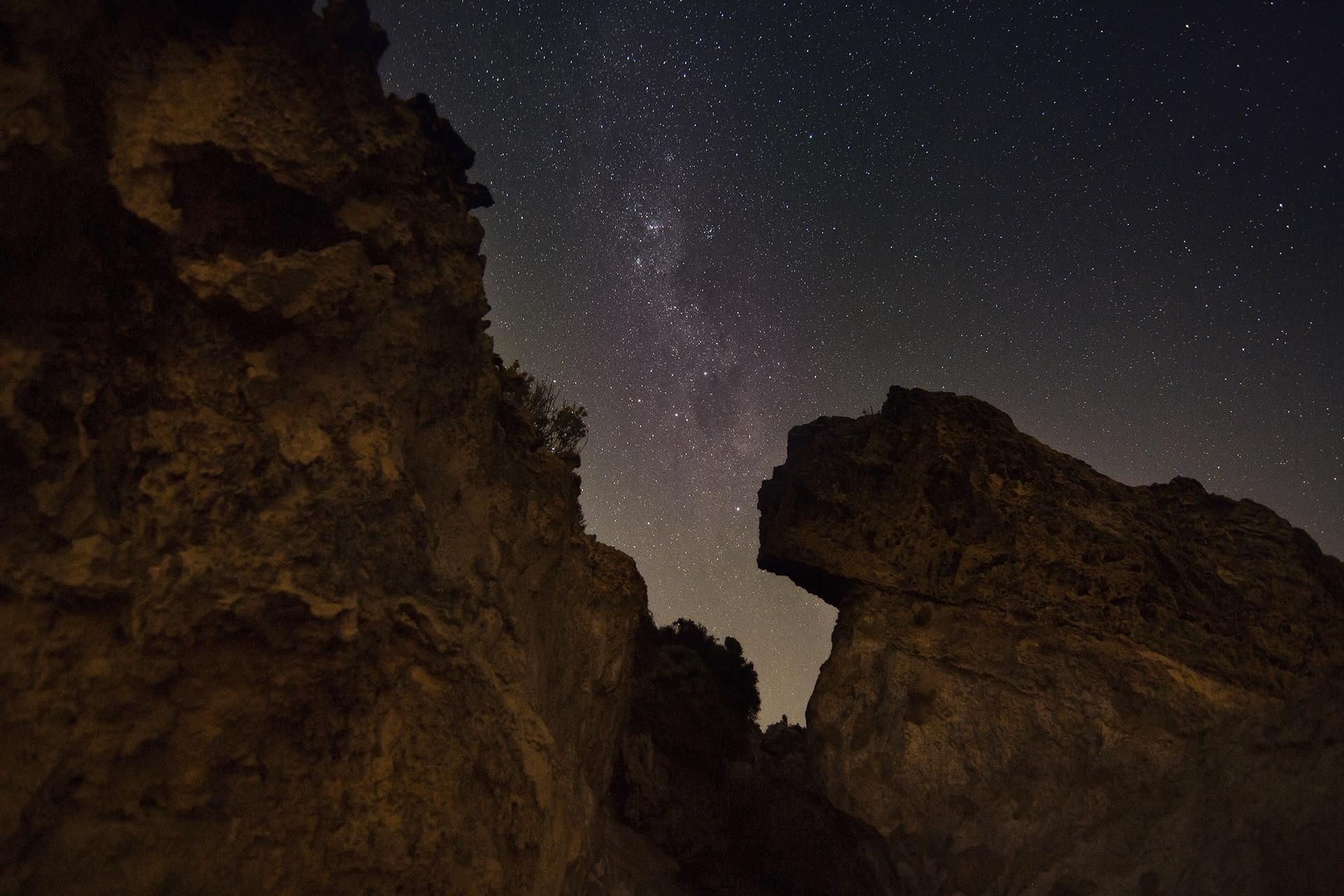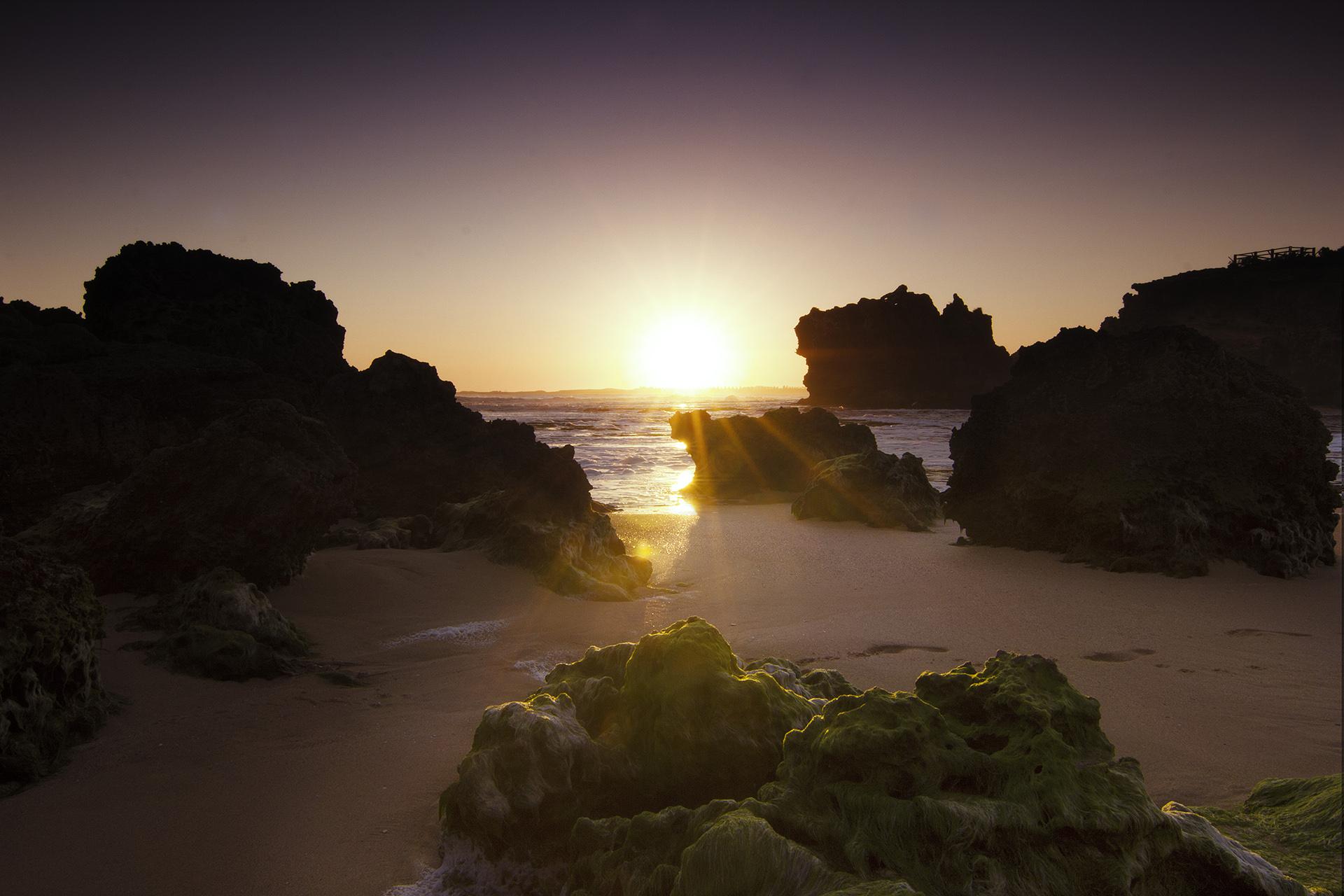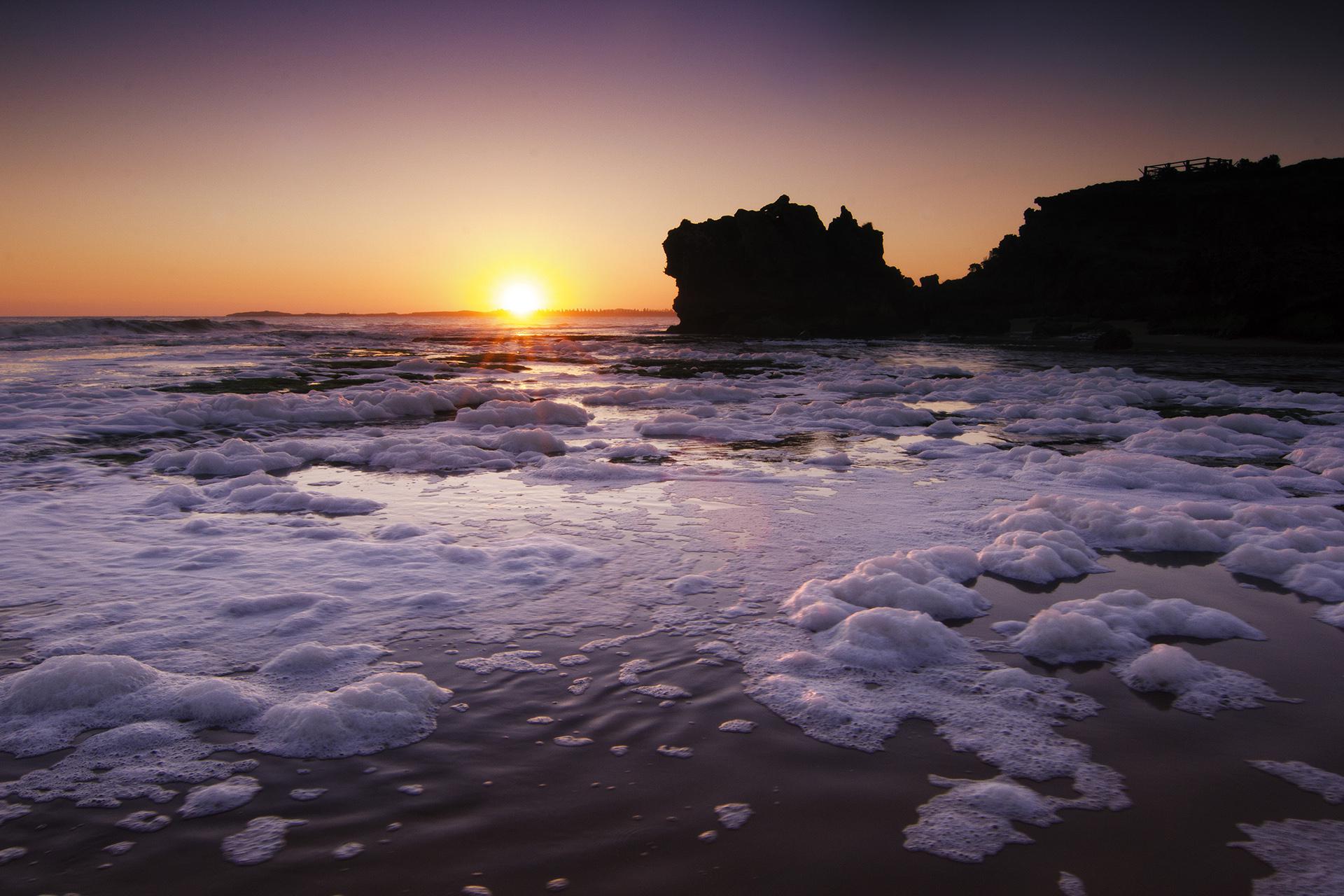From Point Ritchie you can gaze out over a basalt reef to the mighty Southern Ocean.
In the winter and spring southern right whales can be seen just a few hundred metres offshore. The occasional seal likes to drop by and frolic amongst the kelp.
Immediately to the east of the headland is the mouth of the Hopkins River, to the west is Lady Bay and the Warrnambool Breakwater.
At sunrise and sunset the view can be breathtaking.
There’s more than a stunning vista to Point Ritchie. The rocks beneath your feet, the heath-covered dunes and the life in the Hopkins River tell a great story, the story of a people who lived and gathered at this place, Moyjil, for tens of thousands of years.
In 1979 a young academic, John Sherwood, arrived in Warrnambool from Sydney. Within a short time he had encountered former National Museum of Victoria Deputy Director Edmund Gill, a scientist whose interests included palaeontology, geology and archaeology. Gill’s connection to Victoria’s South West stretched over decades, he had married Kathleen Brebner in Warrnambool in 1935.
In 1982, Warrnambool naturalist Jim Henry showed Gill and Sherwood an unusual collection of shells situated at the mouth of the Hopkins River.
The shells (Turbo undulatus) were to be the catalyst for a scientific investigation that has the potential to rewrite our understanding of how humans came to colonise the globe.
In March 2019 research into the origins of the shells and what could be an ancient hearth was published by the Royal Society of Victoria.
The research, produced after several years of study and analysis by scientists from a range of disciplines, can be viewed at the CSIRO publications website.
